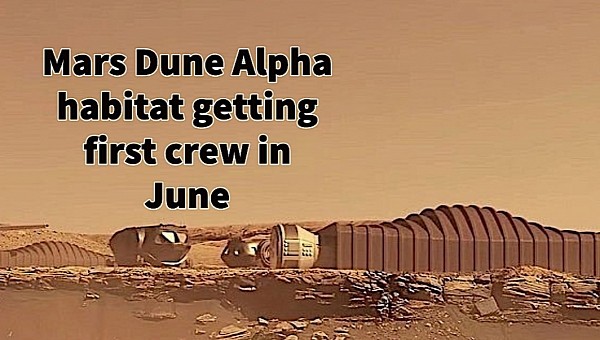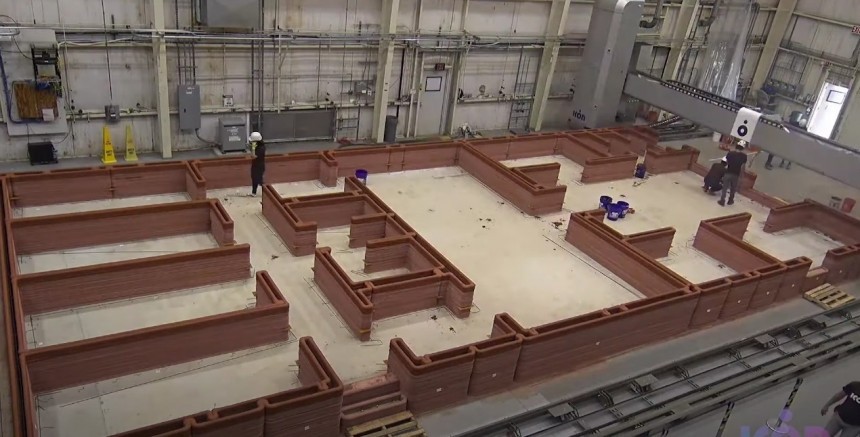Using artificial habitats to simulate the conditions in remote and even alien locations is not something new for human explorers. But that doesn’t stop us from getting all worked up when hearing about new, simulated missions kicking off.
Last year NASA was supposed to start a volunteer-based project meant to simulate the living conditions of one neighboring planet. For some reason, we didn’t get to see that happening in 2022, but we’re told this year the mock mission will actually get going.
The project is called Crew Health and Performance Exploration Analog (that’s CHAPEA, because NASA does like acronyms), and of great importance for it is the simulated environment called Mars Dune Alpha.
Mars Dune Alpha is in essence a 3D-printed habitat built in such a way as to comprise all the amenities a crew of humans going to Mars would need to survive, from private crew quarters to a kitchen, and two bathrooms.
Since living is not the only thing people will have to do on Mars, the habitat is also equipped with medical, recreation, fitness, and workplaces, with the latter including dedicated areas for growing crops and performing technical work.
The 1,700 square foot (160 square meters) habitat, which is not deployed in some remote location but at the Johnson Space Center in Houston, Texas, is supposed to be “the highest fidelity simulated habitat ever constructed by humans,” as per its maker, ICON.
Mars Dune Alpha comes complete with both fixed and movable items, and is highly configurable, including as far as the lighting, temperature, and sound control go.
The CHAPEA program has three missions planned, all of them expected to last a full year. During the first one, which will start in the summer of this year (in June), four people will go in to live a mock Martian’s life. They’ll not only have to survive there, but also conduct simulated spacewalks, robotic operations, and even habitat maintenance, pretty much the same activities a real crew sent to the Red Planet would have to perform.
NASA says it will even subject the volunteers (their names have not been announced yet) to environmental stressors, including “resource limitations, isolation, and equipment failure.”
As per the current timeline, the second CHAPEA mission is set to start in 2025, and the third and last one in 2026. There is no date set yet for an actual crewed mission to the real Mars, but the lessons learned during these experiments will prove invaluable when time for the real deal comes.
Before opening the habitat for its first crew and then closing it for a year, NASA will allow media inside Mars Dune Alpha on April 11, so expect a wealth of new details about the place to be shared then.
The project is called Crew Health and Performance Exploration Analog (that’s CHAPEA, because NASA does like acronyms), and of great importance for it is the simulated environment called Mars Dune Alpha.
Mars Dune Alpha is in essence a 3D-printed habitat built in such a way as to comprise all the amenities a crew of humans going to Mars would need to survive, from private crew quarters to a kitchen, and two bathrooms.
Since living is not the only thing people will have to do on Mars, the habitat is also equipped with medical, recreation, fitness, and workplaces, with the latter including dedicated areas for growing crops and performing technical work.
The 1,700 square foot (160 square meters) habitat, which is not deployed in some remote location but at the Johnson Space Center in Houston, Texas, is supposed to be “the highest fidelity simulated habitat ever constructed by humans,” as per its maker, ICON.
The CHAPEA program has three missions planned, all of them expected to last a full year. During the first one, which will start in the summer of this year (in June), four people will go in to live a mock Martian’s life. They’ll not only have to survive there, but also conduct simulated spacewalks, robotic operations, and even habitat maintenance, pretty much the same activities a real crew sent to the Red Planet would have to perform.
NASA says it will even subject the volunteers (their names have not been announced yet) to environmental stressors, including “resource limitations, isolation, and equipment failure.”
As per the current timeline, the second CHAPEA mission is set to start in 2025, and the third and last one in 2026. There is no date set yet for an actual crewed mission to the real Mars, but the lessons learned during these experiments will prove invaluable when time for the real deal comes.
Before opening the habitat for its first crew and then closing it for a year, NASA will allow media inside Mars Dune Alpha on April 11, so expect a wealth of new details about the place to be shared then.









